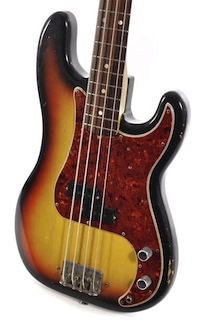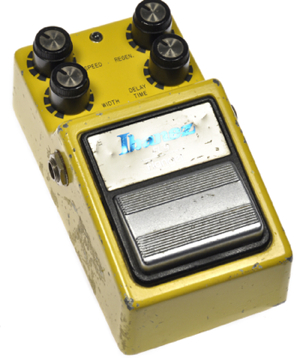So you've taken some great photos, written an epic description and are just about ready to hit "submit" on your new Reverb listing. But what's this? You don't know what to choose where it says condition.
Fear not. Reverb has eight different designations to describe condition, from Brand New on the top all the way down to Non-functioning. Think of it as a 1 to 9 scale. We've put together some general guidelines to explain what each condition means and to help you find the right category for your gear.

Brand New:
Brand New condition is for products listed by authorized dealers that are in the same flawless condition as they were when they left the factory floor, and are covered under the manufacturer’s original limited warranty.
If you are not an authorized dealer, you cannot list brand new unless you handmade the item yourself. If you are reselling a piece of gear that you bought brand new from a retailer—even if it has never been used—it automatically falls under the Mint condition since it may no longer be covered by the manufacturer’s original warranty.
B-Stock:
B-Stock refers to items that were opened and returned, have a cosmetic blemish or imperfection (like a ding in the tolex of an amp or a scratch on the face of an effects pedal), or were used as demo units in a shop. These products are tested to manufacturer's specs and are guaranteed to function perfectly. Many B-Stock items come with a limited manufacturer’s warranty and ship direct from a brand or distributor who sells on Reverb.
Synonyms: Like New, Open Box, Closeout, Customer Return, Blemished, Resealed
Mint
For something to truly be mint, it needs to be just shy of Brand New. Mint items should include the original packaging in most cases. If there's any sort of imperfection, the item should be listed in Excellent condition at best.
Excellent
When something's been used a bit but is still close to new, you can file it under Excellent. For modern gear, Excellent items are almost entirely free of blemishes and other visual defects and have been played or used with the utmost care. For vintage items, there may be some marks here and there, but the item is still in the top echelon when compared to similar examples. All Excellent items should be 100% functional in every way.

Very Good
Very Good describes items with more cosmetic imperfections than Excellent but is still in great condition overall. With a Very Good guitar, for example, you might find some scratches, buckle rash, or other minor blemishes but nothing that affects the playability or function of the instrument.
Good
Good condition includes items that are in fine working order but have some visual imperfections here and there. A pedal with scratches and dents on its chassis, a guitar with some cracks in the binding, or maybe an old snare drum with some corrosion on the lugs could all be classified as Good. All of these items work just fine but have enough visual imperfections to only be in the middle of the scale.
Fair
This would be where the various nicks and blemishes start to actually impact the function of the item. Fair items mostly work fine but maybe have some minor functional issues. Say you've got an old archtop that's totally playable but has some neck warping that render some dead spots on the upper registers. This could be considered Fair.

Poor
Poor condition items have definite functional problems that will usually require some sort of repair. Perhaps this is an old acoustic guitar where the action is so high, it's practically unplayable. Maybe it's a keyboard where some of the keys just don't work. It could be an amp that powers on, but doesn't generate any real volume.
Non-functioning
This would be for instruments and other gear that simply do not work. It could be a guitar with an entirely broken neck, or maybe a mixing board that won't power up. Keep in mind, there are still plenty of buyers out there who are in the market for project guitars and other fixer-upper items.
If you're one of those buyers, check out our Project Gear Handpicked Collection. Once you pick your project, shop Parts to help you fix it!
Other Condition Considerations
Condition and the factors that determine it are, of course, contingent on the type of gear you're talking about. A few dings on the face of a distortion pedal may not make a huge difference to anyone, but a few dings on the face of a hand-crafted classical guitar can drastically impact its desirability. Age is also a major consideration. A 70-year-old mandolin can't be held to the same standard as one that was made this year. It's important to keep in mind that it's all relative.
And of course, if there's any uncertainty, you can always take more pictures and write more detailed descriptions to cover your bases.